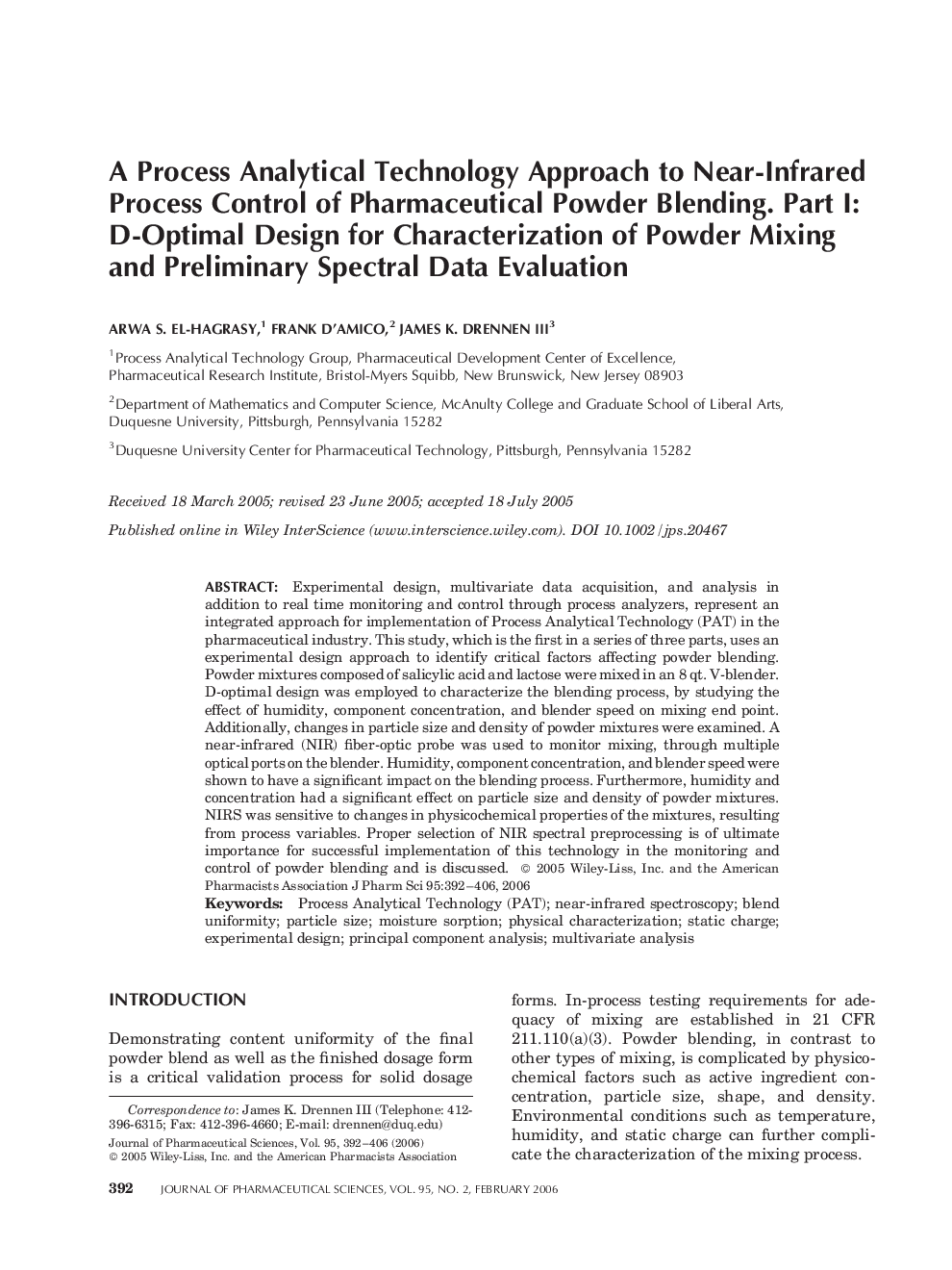| Article ID | Journal | Published Year | Pages | File Type |
|---|---|---|---|---|
| 2487164 | Journal of Pharmaceutical Sciences | 2006 | 15 Pages |
Abstract
Experimental design, multivariate data acquisition, and analysis in addition to real time monitoring and control through process analyzers, represent an integrated approach for implementation of Process Analytical Technology (PAT) in the pharmaceutical industry. This study, which is the first in a series of three parts, uses an experimental design approach to identify critical factors affecting powder blending. Powder mixtures composed of salicylic acid and lactose were mixed in an 8 qt. V-blender. D-optimal design was employed to characterize the blending process, by studying the effect of humidity, component concentration, and blender speed on mixing end point. Additionally, changes in particle size and density of powder mixtures were examined. A near-infrared (NIR) fiber-optic probe was used to monitor mixing, through multiple optical ports on the blender. Humidity, component concentration, and blender speed were shown to have a significant impact on the blending process. Furthermore, humidity and concentration had a significant effect on particle size and density of powder mixtures. NIRS was sensitive to changes in physicochemical properties of the mixtures, resulting from process variables. Proper selection of NIR spectral preprocessing is of ultimate importance for successful implementation of this technology in the monitoring and control of powder blending and is discussed. © 2005 Wiley-Liss, Inc. and the American Pharmacists Association
Keywords
Related Topics
Health Sciences
Pharmacology, Toxicology and Pharmaceutical Science
Drug Discovery
Authors
Arwa S. El-Hagrasy, Frank D'Amico, James K. III,
